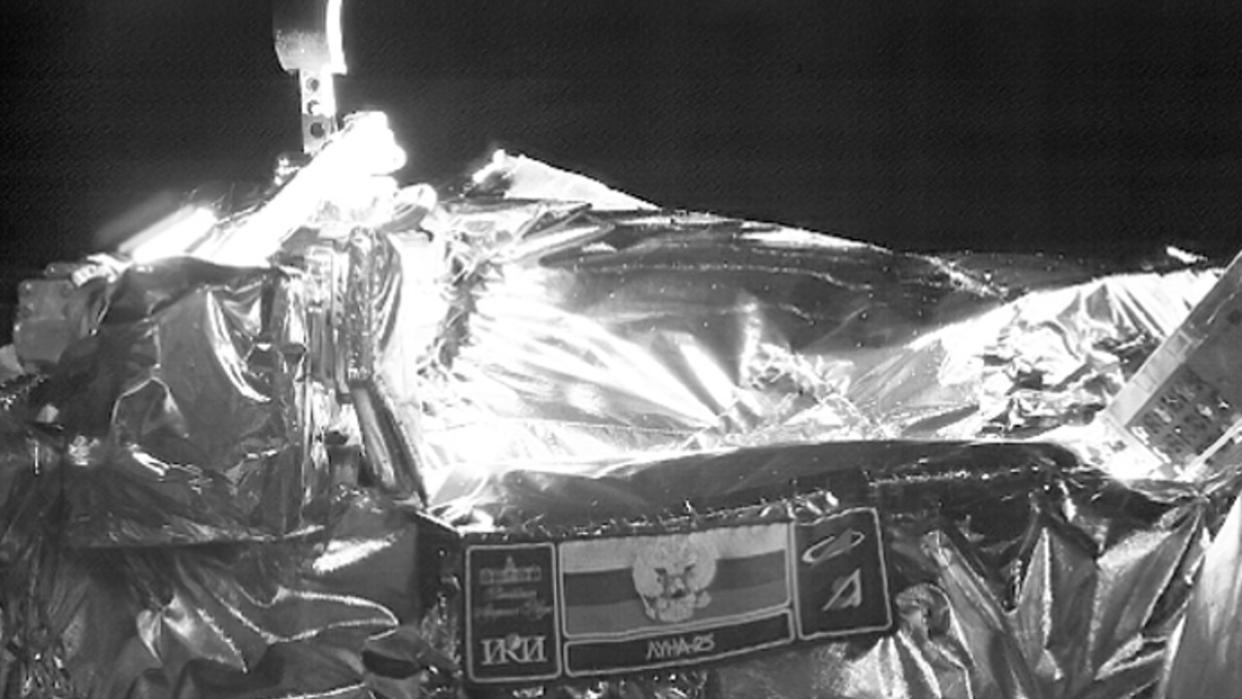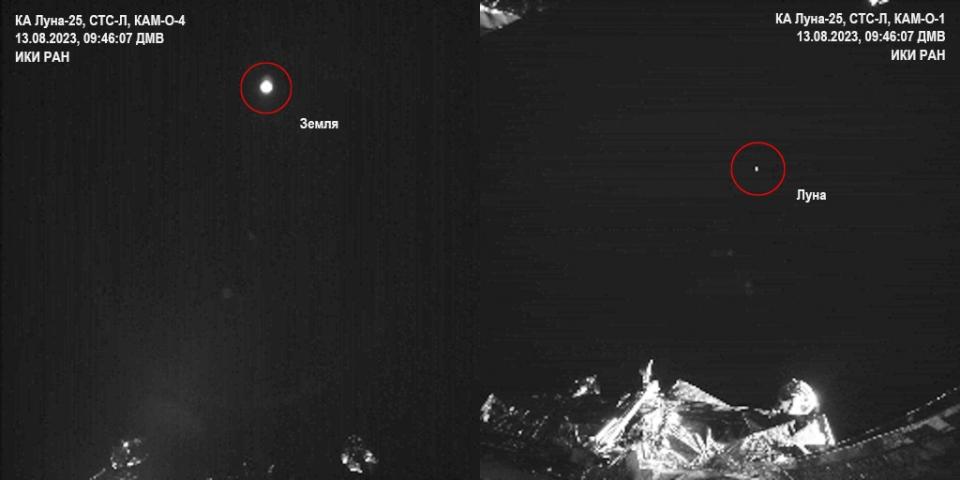Russia's Luna-25 moon lander snaps 1st pictures from space (photos)

Russia's first lunar lander since 1976 has beamed back its first images from space.
The Luna-25 mission lifted off on Aug. 10 atop a Soyuz-2.1b rocket from the Vostochny Cosmodrome in Russia's far eastern Amur Region, marking the first domestically produced probe sent to the moon in modern Russian history. The last moon mission from what is now Russia, Luna-24, took off in 1976 and returned about 6.2 ounces (170 grams) of lunar samples. The launch of Luna-25 faced multiple delays due in part to Russia's war on Ukraine, which has had wide-ranging effects on international spaceflight cooperation.
Luna-25's first images were taken on Sunday (Aug. 13) and published Monday (Aug. 14) by the Space Research Institute of the Russian Academy of Sciences (IKI RAS). The black-and-white photo collection shows the Russian flag and mission patch on the spacecraft's structure alongside images of Earth and the moon shining bright against the blackness of space.
"These images show the elements of the device's design against the background of the Earth, from which we have already departed forever, and against the background of the moon, to which we will soon arrive," Russian state space agency Roscosmos wrote in a statement published on Telegram on Aug. 14 (translation by Google).
Related: Russia launches Luna-25 moon lander, its 1st lunar probe in 47 years
The images were taken at a distance of about 192,625 miles (310,000 km) from Earth, according to IKI RAS. The moon, by comparison, is around 238,855 miles (384,400 km) away from Earth, on average.

While there was some initial speculation published on social media about the state of Luna-25 in the days following its launch, the images appear to dispel these worries and prove the lander is healthy and on its way to its lunar destination.
"All systems of the spacecraft are operating normally, communication with the station is stable, and the energy balance is positive," IKI RAS wrote in a statement accompanying the images (translation by Google).
If all goes according to plan, Luna-25 will reach the moon on Tuesday (Aug. 15) before orbiting Earth's glowing white satellite for five to seven days. From there, the probe will attempt a landing near one of three craters surrounding the lunar south pole. The probe was designed to operate for at least one year.
Once on the lunar surface, assuming its landing goes well, Luna-25 will analyze lunar soil, search for water ice and conduct experiments about the moon's thin atmosphere. The lander carries eight different instruments including a laser mass spectrometer and a device that can zap lunar soil samples then examine the resulting fumes to analyze chemical composition.
RELATED STORIES:
— NASA's Artemis program: Everything you need to know
— See Artemis 3 landing site near moon's south pole in stunning new NASA photos
— India's Chandrayaan-3 moon rover enters lunar orbit, snaps stunning photos (video)
Luna-25 adds to a growing list of international moon missions aimed at either studying or landing near the lunar south pole region.
India's Chandrayaan-3 rover entered lunar orbit on Aug. 7 and is expected to touch down near the moon's south pole on Aug. 23. South Korea launched the Korea Pathfinder Lunar Orbiter (KPLO) in August 2022 carrying the NASA-operated ShadowCam designed to help hunt for water ice near the moon's south pole.
And NASA's Artemis Program aims to place humans near the moon's south pole no earlier than 2025 as part of the Artemis 3 mission.
